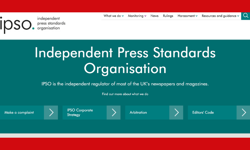A recent study called Mobilising Media found that UK print publishing industry is failing to adopt mobile business strategies and is missing out on revenue from advertising or premium content via mobile websites (mSites) and apps.
The research highlighted that only 11 per cent of over 700 UK print titles have the capability to deliver their business model via all types of mobile device users – something which is simple to achieve by implementing a mobile website.
This small group has recognised that delivering mobile content isn’t just about having an app, they have made their content universally available, allowing them to serve adverts and attract subscribers from a much bigger total audience.
What was less clear was the reason why publishers were neglecting this cost effective way of delivering eye balls for advertisers.
Clearly, publishers’ business models are not ready to take advantage of mobile. Regardless of whether online content is free at point of access or behind a paywall, publishers are not utilising mobile to maximise their bottom line performance.
There is no clear cut reason why, other than perhaps publishers are still struggling with their online strategies and therefore their mobile strategy is being left behind too.
Not all publishers have the in-house resource to set up a dedicated mobile channel and some are ploughing all their financial resources into traditional internet channels and simply can’t afford to make the jump.
The teen market, which has suffered the most due to competition from the internet and social networking, is the worst performing print category and there are no teenage lifestyle magazines delivering content via mobile apps or mSites.
Business-to-business titles offer a more complex story. William Reed and Incisive Media have mobile strategies which can maximise advertising revenue, but the majority of this category is performing poorly.
Consumer magazines, which have lots of premium content that customers are willing to pay to access, are also behind the curve too with under half making their content fully available for all mobile devices. This is especially acute with men’s consumer titles. However, on the plus side, some publishers, like IPC Media, are ahead of the game.
If you are still looking for further evidence, go no further than Google. The search giant usually backs winners and most recently, it has backed mobile. Peter Fitzgerald, Director of Business Markets at Google, recently said of the importance of having your content optimised for mobile: “If you don’t do anything else, get a mobile-enabled website. Between 10-20% of all Google searches are coming from mobile already.”
Media consumption habits have changed and this shift doesn’t stop at mobile devices. These days, customers are just as likely to view a traditional print publication’s website via their TV or games console. However, mobile is the easiest new channel to crack, as it is a natural extension of existing online strategies.
Our view is simple. Millions of people are using their mobiles to view the internet, read, shop, check information and plan their journeys. They are keeping up with family and friends via social media, taking photos and making video calls, so now that the mobile phone has become the gateway to almost everything, and we rely on them every day of our lives, it is more essential than ever that publishers mobilise their media.










